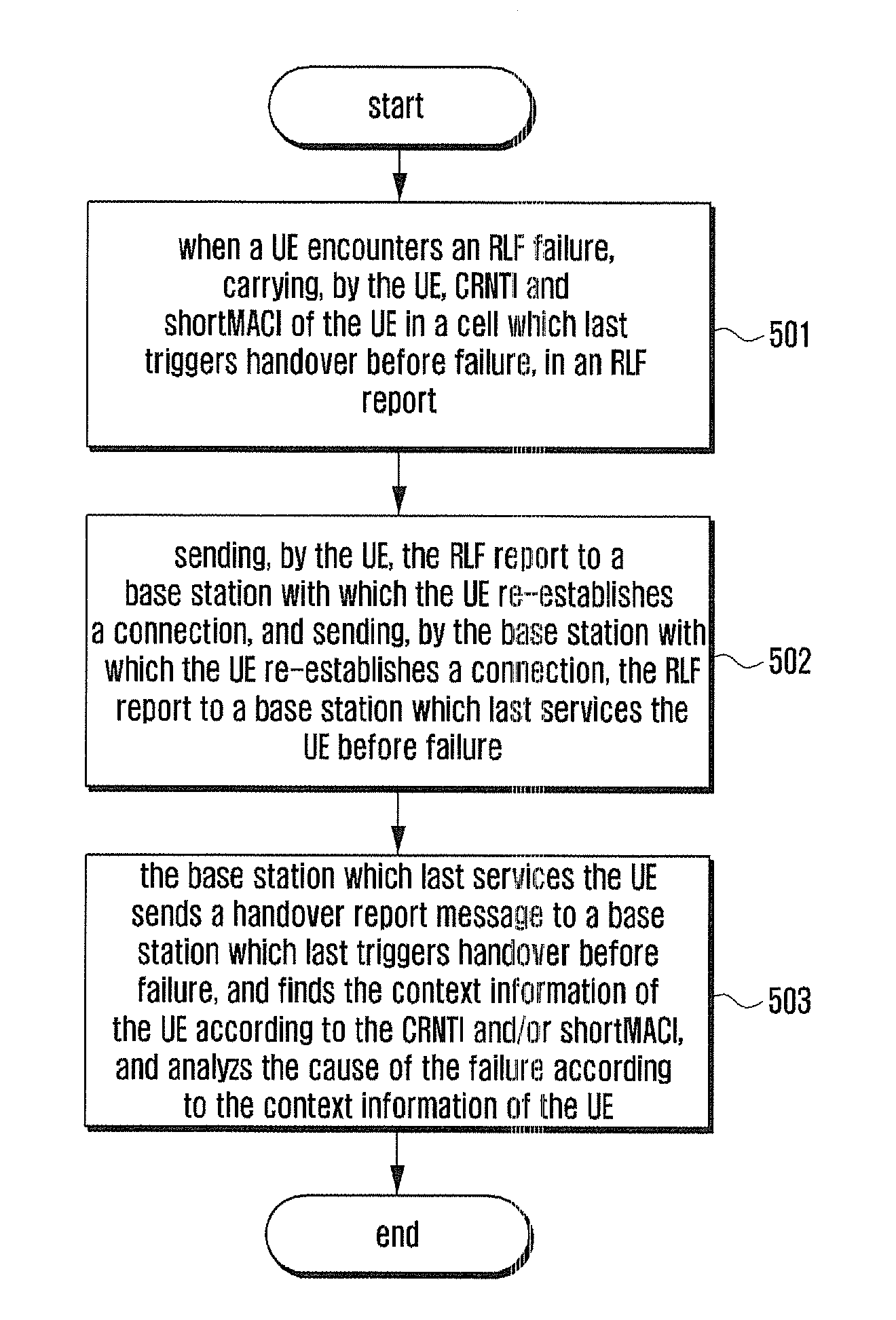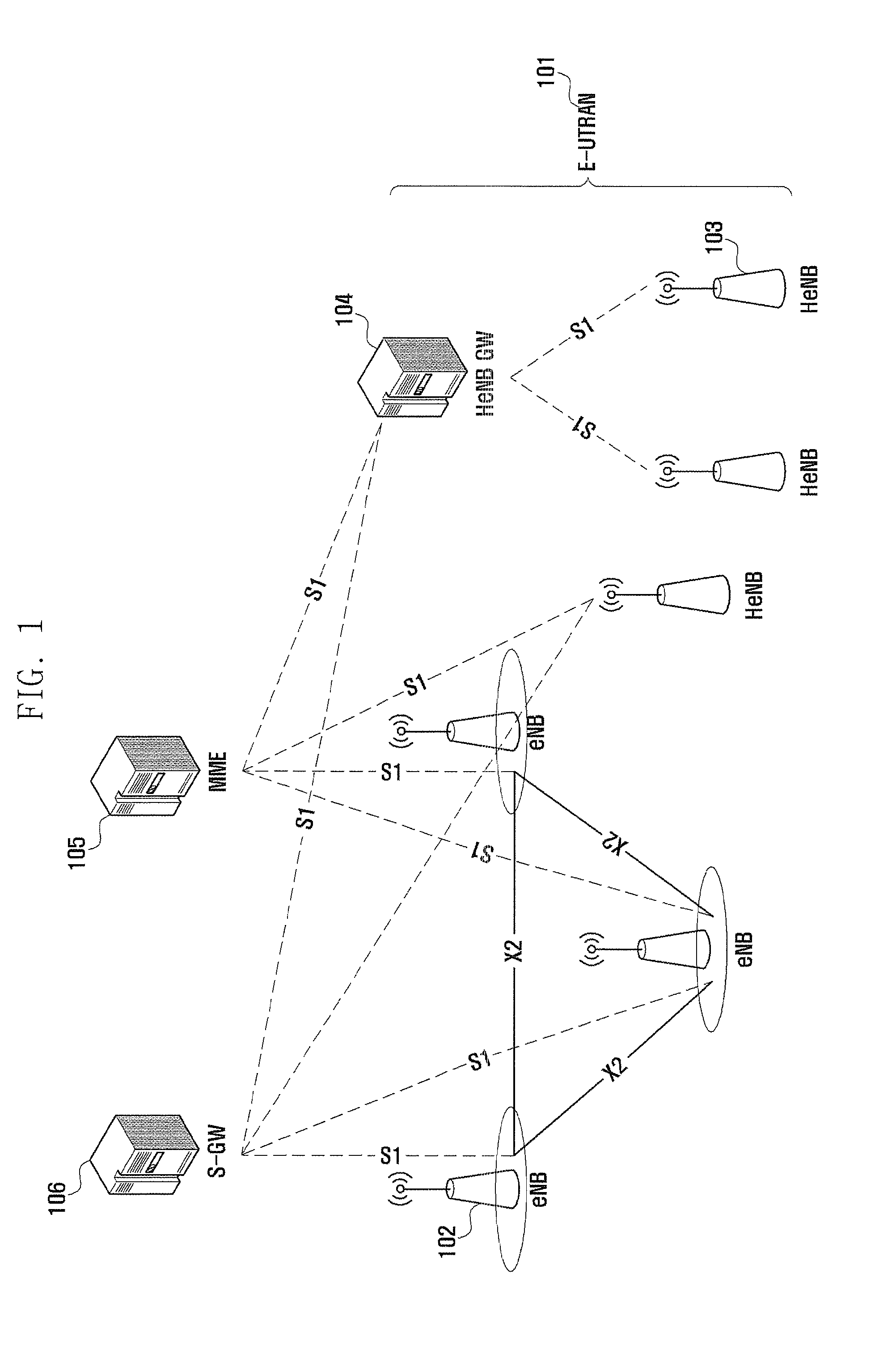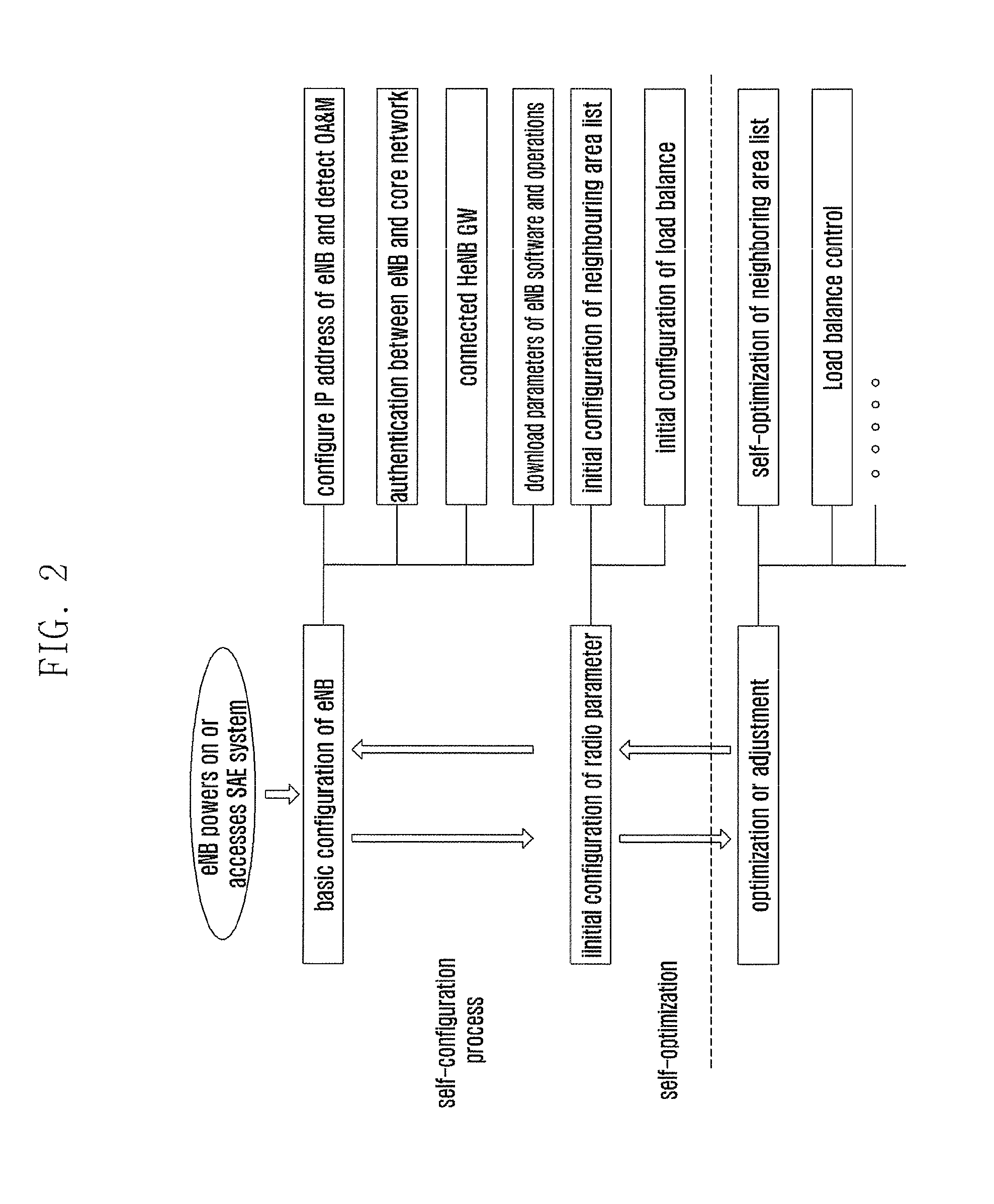Method for detecting cause of radio link failure or handover failure
a radio link and cause detection technology, applied in the field of mobile communication technology, can solve the problems of difficult to simply use a classification, inability to correctly understand the meaning, and failure of rlf, and achieve the effect of improving the accuracy of determining a caus
- Summary
- Abstract
- Description
- Claims
- Application Information
AI Technical Summary
Benefits of technology
Problems solved by technology
Method used
Image
Examples
first embodiment
[0112]Based on the above methods, FIG. 7 shows a flowchart of the first method for detecting a cause of Radio Link Failure (RLF) or handover failure according to the present disclosure. As shown in FIG. 7, the flow includes:
[0113]Block 701: triggering, by a base station 1, a handover process for a UE, and sending a handover request message including mobility or handover information of the UE in the source cell, to a target base station, i.e., base station 2. The mobility or handover information of the UE is the same as that of the block 301, and will not be repeated here. The base station 2 saves the mobility or handover information of the UE in a cell 1 of the base station 1 in the UE context.
[0114]Block 702: sending, by the base station 2, a handover request confirmation message to the base station 1.
[0115]Block 703: sending, by the base station 1, a handover command message to the UE.
[0116]Block 704: the UE successfully accessing a cell 2. Here, it may be that the UE sends a rand...
second embodiment
[0124]Based on the above methods, FIG. 8 shows a flowchart of the first method for detecting a cause of Radio Link Failure or handover failure according to the present disclosure. As shown in FIG. 8, the flow includes:
[0125]Block 801 to block 805 are the same as block 701 to block 705, and will not be repeated here.
[0126]Block 806: re-establishing or establishing, by the UE, an RRC connection in a cell 1 (i.e., a cell which is controlled by a base station which last triggers a handover before failure). In the process of establishment of the RRC connection, the UE indicates to the network RLF report information.
[0127]Block 807: sending, by the UE, the RLF report to a base station 1. Specifically, the base station 1 obtains information that the UE has an RLF report, and the base station 1 sends a UE information request to the UE to request for the RLF report information. The UE sends a UE information response containing the RLF report information of the UE to the base station. The RLF...
PUM
 Login to View More
Login to View More Abstract
Description
Claims
Application Information
 Login to View More
Login to View More - R&D
- Intellectual Property
- Life Sciences
- Materials
- Tech Scout
- Unparalleled Data Quality
- Higher Quality Content
- 60% Fewer Hallucinations
Browse by: Latest US Patents, China's latest patents, Technical Efficacy Thesaurus, Application Domain, Technology Topic, Popular Technical Reports.
© 2025 PatSnap. All rights reserved.Legal|Privacy policy|Modern Slavery Act Transparency Statement|Sitemap|About US| Contact US: help@patsnap.com



